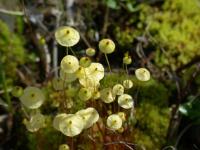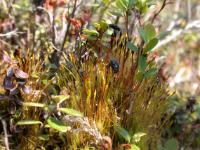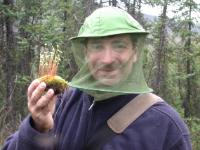Splachnaceae Research in Alaska
Links to Splachnaceae research: |
||
| Splachnum luteum |
Field work in Alaska was funded by a travel grant from the National Geographic Society. Rob Raguso, Bernard Goffinet and myself explored odour chemistry andperformed preliminary trapping offlies on mature specimens of Splachnum luteum, S. rubrum, S. sphaericumand Tetraplodon mnioides. | |
|
Fly on theumbrella-likered hypophysis of S. rubrum. The clumps of sticky spores are visible at the apex of the sporophyes. The yellow sporopophytes are S. luteum. |
The green but very smelly sporophytes of S. sphaericum. The clumps of sticky spores arevisible at the apex of the sporophyes above the swollen hypophyses. |
|
| Fly attracted to Tetraplodon mnioides. The deep red sporophyes are mature individuals. |
Odour chemistry was analyzed using a GC-MS made available to us by Dr. Thomas Clausen of the Department of Chemistry & Biochemistryat the University of Alaska, Fairbanks. | |
|
Flies attracted to odours and visual cues of S. luteum are being trapped using modified soft-drink bottles that have been converted into funnel traps. |
Rob holding moose dung with a population of S. luteum growing on it. |
|


